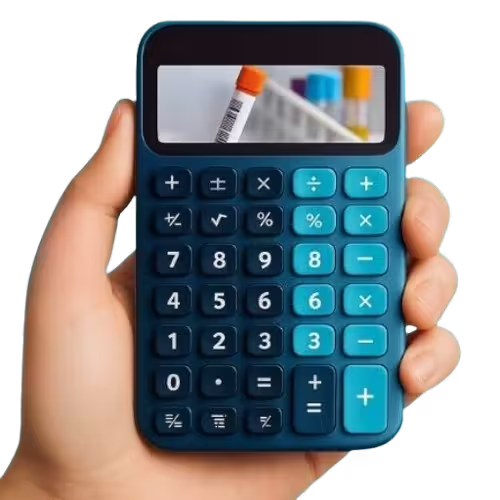That irresistible urge for chocolate cake at 3 PM, the salty siren song of potato chips after a long day—we’ve all been there. Cravings. They can feel like an unstoppable force, hijacking our best intentions and leaving us feeling guilty and defeated. But what if you could understand the why behind these cravings and, more importantly, learn how to navigate them with grace and self-compassion? You absolutely can. It’s all about understanding the psychology at play.
Understanding the Craving Brain
Cravings aren’t just about a lack of willpower. They’re complex neurological and psychological phenomena. Our brains are wired to seek pleasure and avoid pain, and food, especially highly palatable food (think sugar, fat, and salt), triggers the release of dopamine, the “feel-good” neurotransmitter. This creates a powerful reward loop that can be difficult to break.
Also Read: Pollution and Your Skin How to Protect Yourself Every Day
The Role of Dopamine
When you eat that chocolate cake, dopamine floods your brain, creating a sense of pleasure. Your brain remembers this experience and associates the cake with feeling good. The next time you’re feeling stressed or down, your brain might suggest the “solution” – more chocolate cake! This is how cravings are formed, and they’re often deeply rooted in our emotional landscape.
Beyond Biology: Emotional Eating
While biology plays a role, cravings are often intertwined with our emotions. Stress, boredom, sadness, and even happiness can trigger cravings. We might reach for comfort food as a way to cope with difficult feelings or to celebrate a joyous occasion. This is emotional eating, and it’s a very common experience.
Decoding Your Cravings: What Are They Really Telling You?
Instead of simply labeling cravings as “bad,” try to understand what they’re communicating. Asking yourself some key questions can provide valuable insights.
Identify Your Triggers
What were you doing, feeling, or thinking right before the craving hit? Was it a stressful meeting at work? A fight with a loved one? Boredom on a rainy afternoon? Keeping a food journal can help you identify patterns and pinpoint your personal craving triggers. Understanding your triggers is the first step to managing them.
Assess Your Emotional State
Are you truly hungry, or are you feeling stressed, anxious, or sad? If it’s an emotional craving, addressing the underlying emotion is crucial. Consider alternative coping mechanisms like exercise, meditation, talking to a friend, or engaging in a hobby you enjoy.
Question the Craving’s Intensity
On a scale of 1 to 10, how intense is the craving? Sometimes, simply acknowledging the craving and observing it without judgment can help it subside. Often, the intensity will naturally decrease over time if you don’t give in immediately.
Strategies to Outsmart Your Brain and Eat Better
Now that you understand the psychology of cravings, let’s explore some practical strategies to help you navigate them and make healthier choices.
The Power of Distraction
When a craving hits, try distracting yourself with an activity you enjoy. Go for a walk, listen to music, read a book, call a friend, or work on a puzzle. Distraction can help interrupt the craving cycle and give you time to make a more conscious decision.
Mindful Eating: Savor the Moment
Practice mindful eating. This involves paying attention to the taste, texture, and smell of your food, and savoring each bite. When you eat mindfully, you’re more likely to feel satisfied with smaller portions and less likely to overeat in response to cravings. Really focus on the experience of eating. This can significantly reduce the power of cravings.
Plan Ahead: Healthy Alternatives
Keep healthy snacks readily available. Instead of reaching for processed foods, opt for fruits, vegetables, nuts, yogurt, or whole-grain crackers. Having healthy options on hand makes it easier to make better choices when cravings strike. Preparation is key to success.
The 20-Minute Rule
When a craving hits, tell yourself you’ll wait 20 minutes before giving in. Often, the craving will pass during that time. If it doesn’t, at least you’ve given yourself time to consider your options and make a more informed decision.
Self-Compassion: Be Kind to Yourself
If you do give in to a craving, don’t beat yourself up. It happens to everyone. The key is to learn from the experience, identify your triggers, and develop strategies to manage cravings in the future. Treat yourself with the same kindness and understanding you would offer a friend.
- Identify triggers
- Practice mindful eating
- Distract yourself
- Keep healthy snacks available
- Use the 20-minute rule
Long-Term Strategies for a Healthier Relationship with Food
While these immediate strategies can help manage cravings in the moment, it’s also important to address the underlying factors that contribute to them. This might involve working on stress management techniques, improving your sleep hygiene, or addressing any emotional issues that are contributing to emotional eating.
Ultimately, managing cravings is about building a healthier relationship with food and with yourself. It’s about understanding the psychology behind your impulses, developing coping mechanisms, and practicing self-compassion. It’s a journey, not a destination, and it’s one that’s well worth taking. Remember that small, consistent changes can lead to significant improvements over time. You have the power to outsmart your brain, nourish your body, and live a healthier, happier life. Embrace the process with patience and kindness, and celebrate every step you take towards a more balanced and fulfilling relationship with food.







